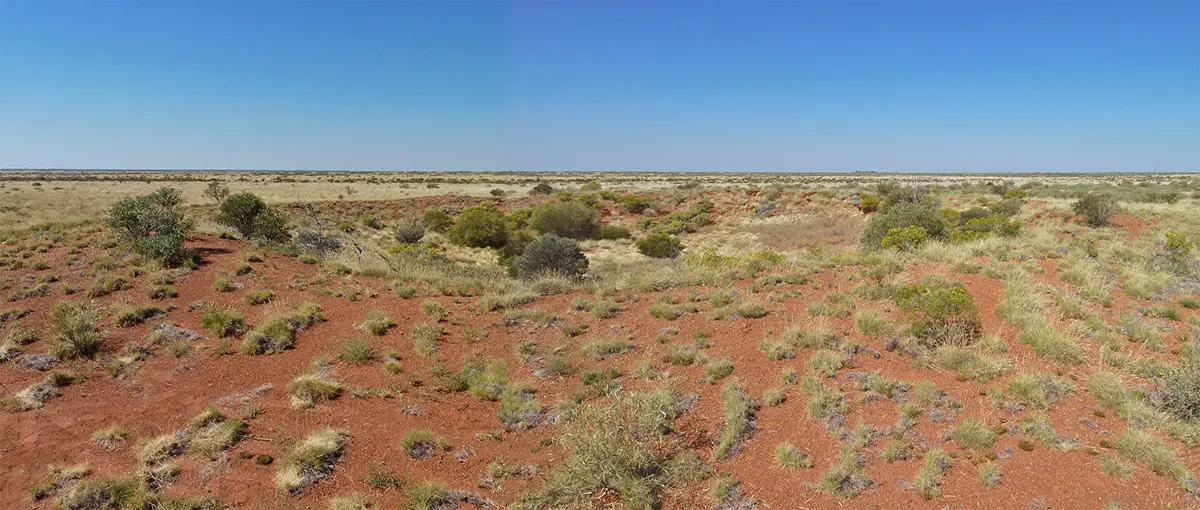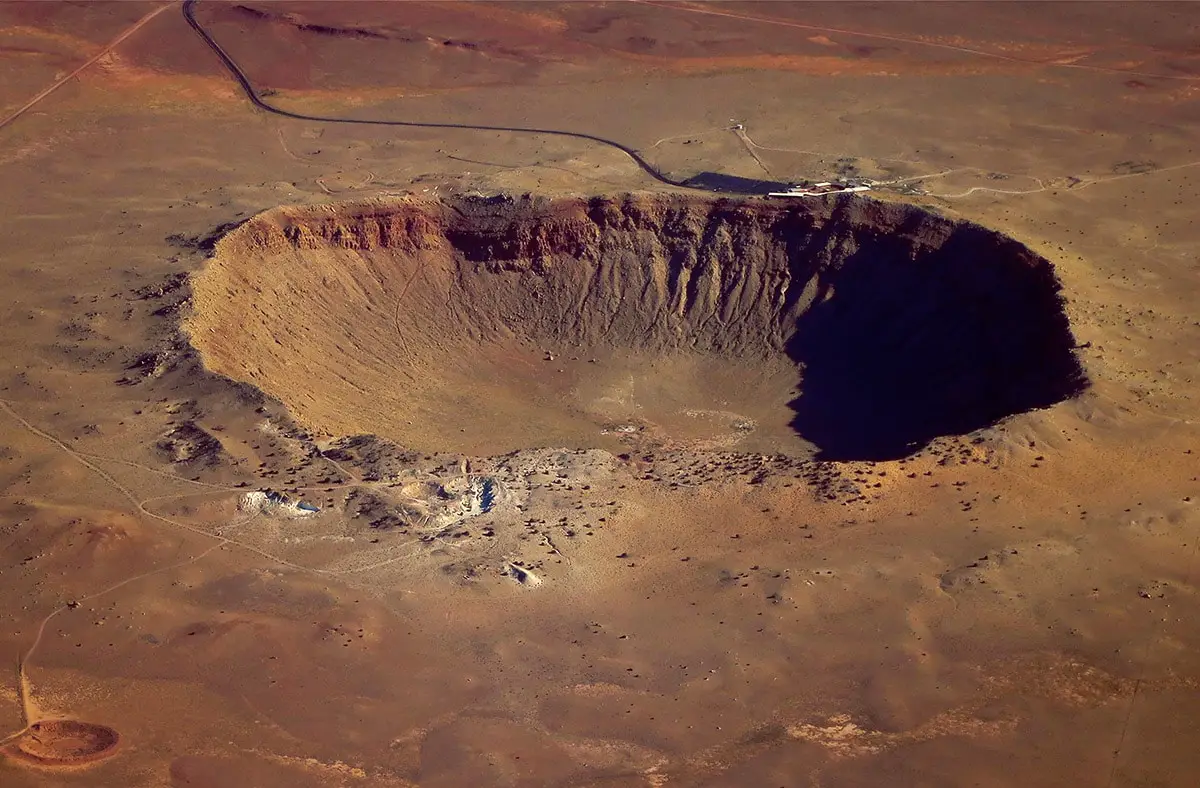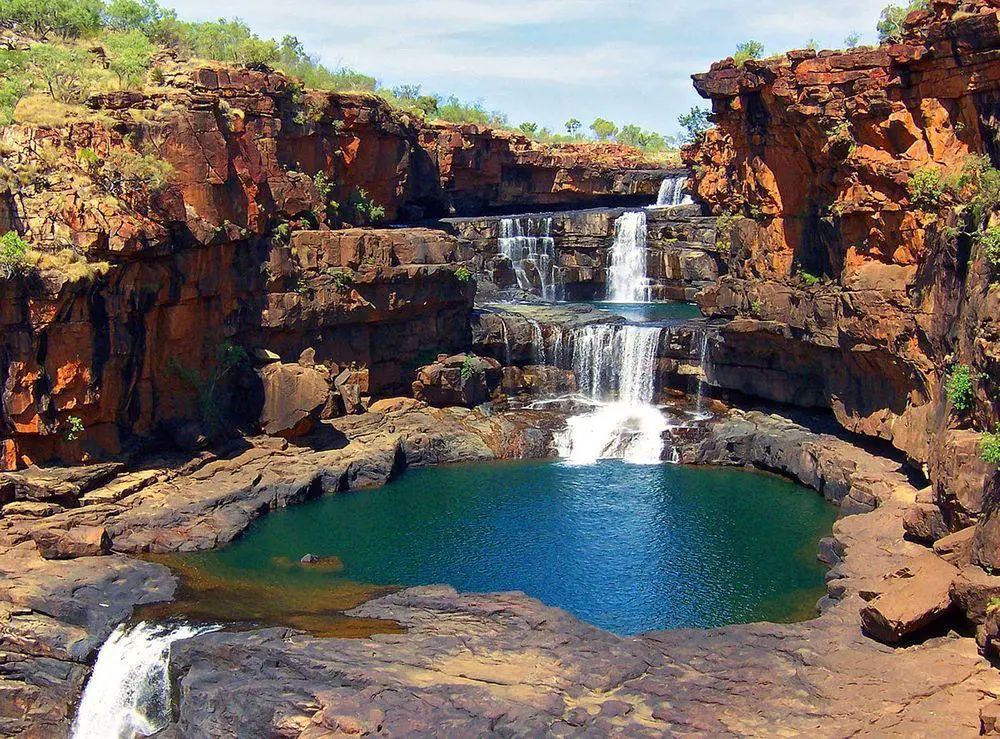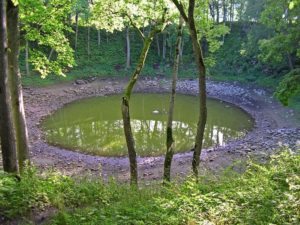World 🢖 Australia and Oceania 🢖 Australia 🢖 Western Australia
Impact craters 🢔 Geological wonders 🢔 Categories of wonders
Wonder
Veevers crater

 In short
In short
One of best preserved impact craters on Earth is Veevers Crater. This crater in remote part of Western Australia was noticed by specialists only in July 1975.
 37.8%
37.8%
GPS coordinates
Location, address
Diameter
Depth
Age
Map of the site
If you see this after your page is loaded completely, leafletJS files are missing.
 In detail
In detail
Veevers crater is named after Australian geologist John Veevers who used to work in this area in the 1950s. This small crater was noticed by geologists during the survey in July 1975 and they were almost certain that it has been created by meteorite.
Some years later, in August 1984 a famous couple of scientists Carolyn and Eugene Merle Shoemaker discovered several pieces of a metallic meteorite on the rims of the crater – thus the meteoritic origin of the crater was verified.

The age of the crater is not certain – but most likely less than 4 000 years. The meteorite fell in the flat desert plain between Great Sandy and Gibson Deserts. The dry desert environment has conserved the consequences of the impact very well – even the pieces of the meteorite still look rather fresh.
Crater is symmetrical, bowl-shaped, formed in Cenozoic laterites. Rim of the crater is some 20 m wide and rises approximately 1.5 m above the surrounding plain. Diameter of crater is 70 – 80 m, depth – up to 7 m. The original meteorite was some 100 – 1000 tons heavy.
This is the only known impact crater on Earth created by the very rare IIAB iron meteorite. Less than 0.5% of meteorites on Earth belong to this type. Pieces of meteorite contain exotic, very rare metallic minerals – octahedrite, schreibersite and rhabdite, kamacite, carlsbergite.
References
- A.W.R.Bevan, E.M.Shoemaker and C.S.Shoemaker. Metallography and thermo-mechanical treatment of the Veevers (IIAB) crater-forming meteorite., Records of the Western Australian Museum 17:51-59 (1995). Accessed on January 15, 2013.
Veevers crater is included in the following article:
 Linked articles
Linked articles

Impact craters
There are many pieces of solid matter flying around in space. And VERY frequently they fall on the surface of the Earth. There are estimates that every year on Earth fall 18,000 – 84,000 meteorites larger than 10 grams: e.g. one meteorite every 6 – 30 minutes.
This category includes outstanding impact craters – detectable scars on the surface of Earth left by a body coming from outer space. The category includes also meteorites – natural objects from outer space.

Wonders of Australia
The enormous and diverse area of Australia contains countless amazing and unique monuments. Parts of the country have not been thoroughly investigated and sometimes there are reported new, surprising finds.

Wonders of Western Australia
This giant Australian state is spectacular and very rich with unusual landmarks. Highlights of Western Australia are refuges of biodiversity in remote parts of the desert, amazing cliff formations, and unique aboriginal art.

